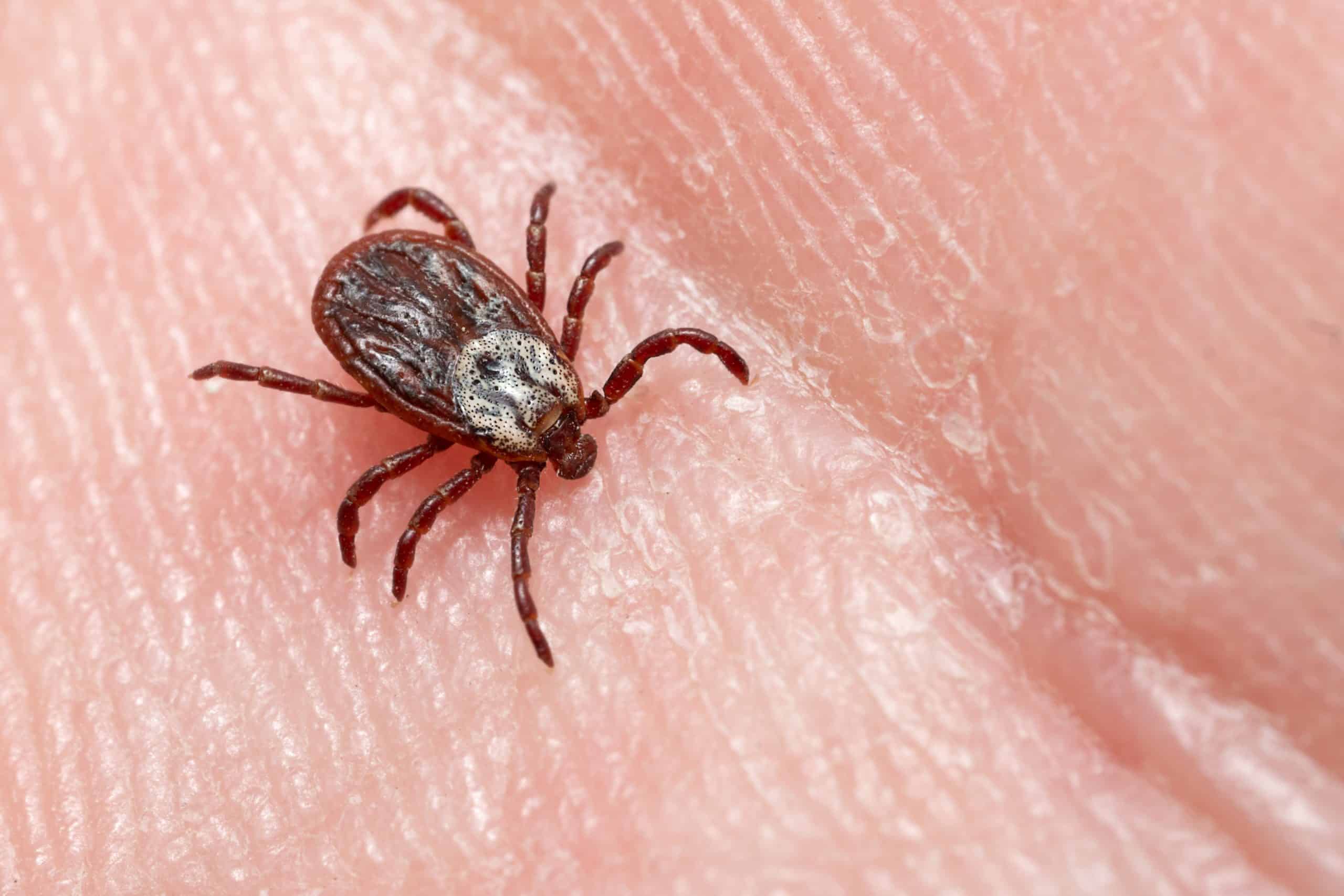In the ongoing battle against fleas and ticks, keeping a pest-free home in Arizona is important for both you and your pets. These tiny parasites can wreak havoc on your living spaces, posing health risks and discomfort.
Our comprehensive guide aims to equip you with the ultimate tools and knowledge to fend off fleas and ticks effectively. From preventive measures to home remedies, we delve into a variety of strategies to create a pest-resistant environment.
You can safeguard your home and loved ones against the persistent threat of fleas and ticks by simply doing the following:
- understanding the lifecycle and behavior of pests
- implementing proactive pest control strategies
- utilizing safe and efficient treatments
Comparing the Culprits: Fleas vs. Ticks
When it comes to fleas and ticks, which are often mentioned together due to their nuisance to both animals and people, it’s crucial to recognize that they are distinct species of insects.
Fleas

Flea are small insects that feed on the blood of warm-blooded animals like dogs and cats (and even birds). They cause itching and discomfort through their bites. These pests reproduce rapidly, which lets them easily infest a variety of environments. They thrive in carpets, bedding, and upholstered furniture, laying hundreds of eggs that develop into larvae in cracks and crevices.
Fleas also inhabit outdoor areas, waiting to infest passing animals in lawns, gardens, and shady spots. Their feeding habits contribute to allergic reactions in some hosts, making regular grooming, use of preventive products, and environmental treatments essential for control.
Ticks

Ticks are parasites that bite and latch onto their hosts, playing a significant role in disease transmission, such as Lyme disease and Rocky Mountain Spotted Fever. Unlike fleas, ticks primarily inhabit outdoor environments, including tall grass, wooded areas, and shrubs. They use a questing behavior, climbing vegetation and waiting for suitable hosts to pass by.
Ticks are resilient and are capable of surviving long periods without a blood meal. Prevention involves protective measures, like wearing appropriate clothing, using insect repellents, and performing regular checks on pets and humans after being outside. The prompt removal of attached ticks helps minimize the risk of disease transmission.
While both fleas and ticks pose challenges to the well-being of animals and humans, understanding their distinct habits and environments is crucial for implementing effective prevention and control strategies. Fleas thrive indoors, reproduce rapidly, and cause discomfort through bloodsucking, while ticks predominantly inhabit outdoor areas, rely on questing behavior, and serve as vectors for various diseases.
Understanding Fleas and Their Habits
Fleas are tiny wingless insects with a flattened body that can easily move through feathers, hair, and fur. They are brownish or reddish-brown in color and can be smaller than a grain of rice, looking like specks of dirt on your pet or in your carpet.
With powerful hind legs, they can easily jump from pet to pet or within their environment, spreading quickly. They will typically infest mammals, such as dogs, cats, rats, and occasionally humans.
If you are bitten by a flea, you might experience itching, redness, and small bite marks, usually found on the ankles or near the feet. In dogs and cats they tend to stay near the neck or tail, but can cover the whole body with an infestation. Fleas can transmit diseases, such as flea-borne typhus and, in some cases, act as intermediate hosts for tapeworms.
Type of Ticks and What to Look For
Ticks are arachnids, related to spiders, and come in a variety of sizes ranging from tiny larvae to large, engorged adults. They are usually flat or oval shaped with four pairs of legs sticking out and are different colors based on where they are in their life-cycle.
Larvae
Tick larvae are typically very small and may appear translucent or pale in color. They often have six legs.
Nymphs
Nymphs have eight legs and are larger than larvae. They can range in color from light brown to dark brown or black.
Adults
Adult ticks also have eight legs and can vary in color. They may be brown, reddish-brown, black, or gray. The color can also change depending on whether the tick has fed and become engorged with blood.
Ticks are known to infest a wide range of hosts, including mammals, birds, and reptiles. Some species of ticks prefer specific hosts, like deer, while others are more opportunistic.
They are notorious for transmitting various diseases, including Lyme disease. Pathogens that are carried in the tick’s saliva can be transmitted during feeding.
How Fleas and Ticks Pose Risks to You and Your Pets

Fleas and ticks can pose significant risks to both humans and pets due to their ability to transmit diseases, cause discomfort, and contribute to various health issues.
Disease Transmission
Fleas: Fleas can transmit diseases such as flea-borne typhus to humans. They may also act as intermediate hosts for tapeworms, leading to potential health issues in both pets and humans.
Ticks: Ticks are notorious vectors for various diseases. Lyme disease, Rocky Mountain spotted fever, and biosynthesis are just a few examples of the serious illnesses that can be transmitted through tick bites. The pathogens responsible for these diseases are often in the tick’s saliva and can be transmitted to hosts during feeding.
Discomfort and Allergic Reactions
Fleas: Flea bites can cause itching, redness, and small bite marks, leading to discomfort in both pets and humans. Some individuals may experience allergic reactions to flea saliva, exacerbating the irritation.
Ticks: Tick bites can also cause discomfort, but the real concern lies in potential allergic reactions and the development of red, swollen areas around the bite sites.
Anemia in Pets
Fleas: In severe infestations, fleas can cause anemia in pets, particularly in young animals. Anemia results from the loss of blood due to repeated flea feeding. This condition can lead to weakness, lethargy, and, in extreme cases, life-threatening complications.
Ticks: While ticks may not directly cause anemia, heavy infestations can contribute to an animal’s overall health decline. Anemia could potentially occur if the host animal is particularly susceptible or infested with a large number of ticks.
Home Impact
Fleas: Flea infestations extend beyond pets, affecting the home environment. Carpets, bedding, and upholstery can become breeding grounds for fleas, necessitating thorough cleaning, vacuuming, and, in some cases, the use of insecticides to eradicate eggs and larvae.
Ticks: While ticks primarily infest outdoor areas, they can be carried indoors by pets or humans. Vigilance is required to prevent ticks from establishing themselves in the home environment, as they can hide in cracks, crevices, and corners. Regular checks and quick removal are essential to minimize the risk of indoor tick infestations.
Where Fleas and Ticks Hide in Your Home
Fleas can be found in various areas inside the home, especially in environments where pets live. Here are common places where fleas may be present indoors:
- Pet bedding
- Carpets and rugs
- Fabric furniture
- Cracks and crevices of floorboards
- Outdoor areas
- Pet play areas
- Warm and humid areas
Creating a Flea and Tick-Proof Home Environment

Maintaining a flea and tick-proof home environment involves a combination of strategies to ensure the well-being of your pets and family.
Prioritize regular pet care by administering veterinarian-approved preventatives, like topical treatments, oral medications, or collars. Consistent grooming practices, including brushing and using a flea comb, aid in the early detection and removal of fleas and ticks.
In your living spaces, emphasize cleanliness by frequently vacuuming carpets, rugs, and furniture, and washing pet bedding in hot water. Reduce hiding spots for fleas by decluttering and keeping areas clean, paying attention to cracks and crevices.
Regular inspections of both pets and living spaces are crucial for early intervention and control. Perform tick checks on yourself, family members, and pets after potential exposure.
Outdoor Prevention Strategies to Keep Fleas and Ticks at Bay
Preventing fleas and ticks from entering your home starts with getting rid of them in your yard and outside spaces. Landscaping practices play an important role, and regularly mowing the lawn short helps eliminate tick habitats in tall grass. Remove leaf piles, especially in damp places, to prevent them from breeding.
Yard treatments, such as pet-safe insecticides, can be applied strategically in areas with high pet traffic, targeting spots where your pets rest or play. Putting up fences will help prevent wildlife like deer or rodents from coming into your yard and introducing fleas and ticks to your outdoor spaces. Encouraging natural predators, like predatory insects and birds, can also help control flea and tick populations.
If outdoor infestations continue, seeking professional pest control services can provide targeted solutions. Combining these outdoor prevention strategies with indoor measures creates a comprehensive approach to keeping your home and surroundings free from fleas and ticks.
Importance of Professional Flea and Tick Extermination
To prevent fleas and ticks from entering your home, you can start with topical medications for your pets. However, to completely get rid of them and to save your pets from itching and biting, it’s important to hire a professional flea and tick exterminator.
At House Doctor Exterminating, we have the specialized knowledge of fleas and ticks, letting us create customized treatment plans tailored to the unique circumstances of each infestation. We have access to safe and effective pesticides, ensuring targeted and efficient eradication while minimizing risks to pets, humans, and the environment. We conduct thorough inspections of both indoor and outdoor spaces, addressing all life stages of fleas and implementing measures to reduce tick presence in outdoor areas.
Beyond extermination, we can offer valuable preventive advice, reducing the risk of future infestations. By efficiently handling the extermination process, we can save time and effort for you, providing the right treatments for fleas and ticks.






